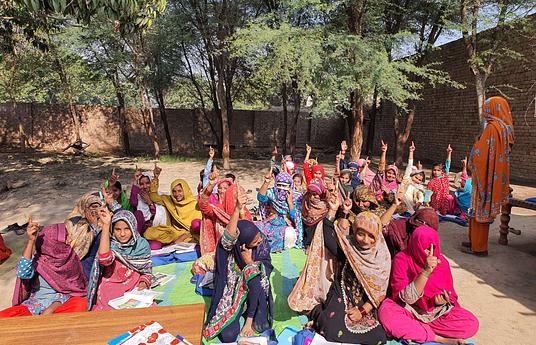7 out of 10 children around the world not learning, and in low-income countries ‘learning poverty’ is estimated at 92%. However, the non-state school sector’s role in delivering education has been growing. Today more than 1 in 4 schools are non-state, with government expenditure constraints creating conditions for affordable schools to expand and fill the supply gap for lower income families.
Our innovation mobilizes existing private capital in low- and middle-income countries (LMICs) as investment into the affordable education sector. We partner with local financial institutions and provide technical assistance to design and implement education lending products. The School Improvement Loan provides financing to school owners to invest in building more classroom, building gender-separated bathrooms, and purchasing school assets . The School Fee Loan helps parents with irregular income effectively spread out the costs of their children’s education to prevent school drop-outs . Our EduQuality initiative then partners with school owners to offer professional development for their leaders on school development planning and school management, and for teachers on best practices, as many have minimal access to ongoing professional development. A recent study found children gain as much as half a year equivalent of additional schooling linked to our innovation.
The EduFinance footprint has massively grown from its original start in Ghana and scaled across Africa, Latin America and Asia. Today, our 173 financial institution partners span 31 countries and have benefited more than 13.9 million children by investing over US$874 million in education. Over the next 2-3 years we aim to support new financial institution partners with TA to invest in education in countries with the greatest need for education access and demand for affordable non-state schools. We estimate an additional 38 million new seats for learners in LMICs will be demanded through 2026. Our partners are currently financing around 19,000 school borrowers, which is a fraction of the estimated 1.39 million non-state schools in LMICs representing a US$36 billion market.
Financial institutions interested in technical assistance to develop, launch and grow an EduFinance portfolio, and/or social impact investors seeking opportunities to make a positive impact in education by directing financing schools and families via financial institutions are invited to contact us to learn more at edufinance@opportunity.org.



